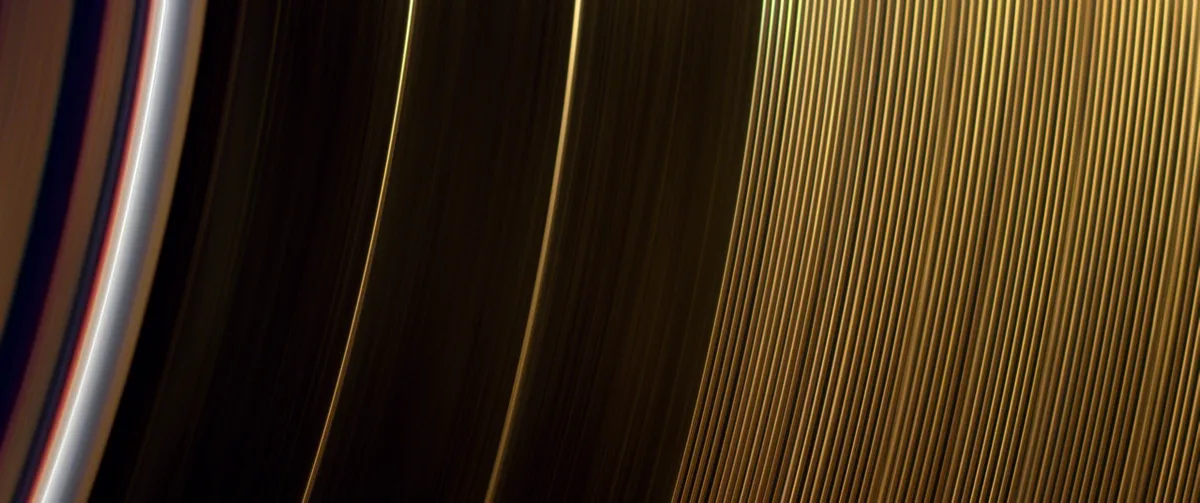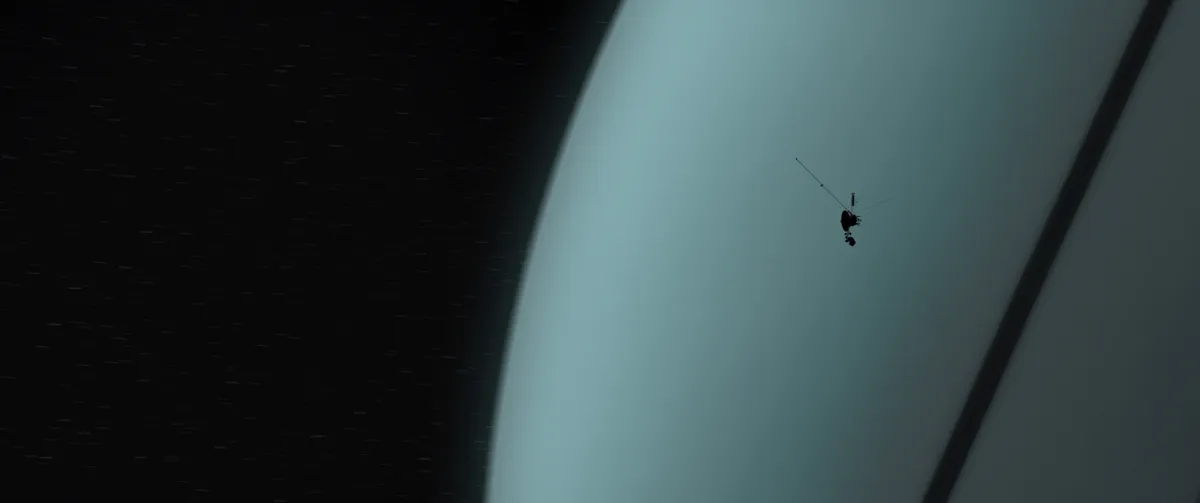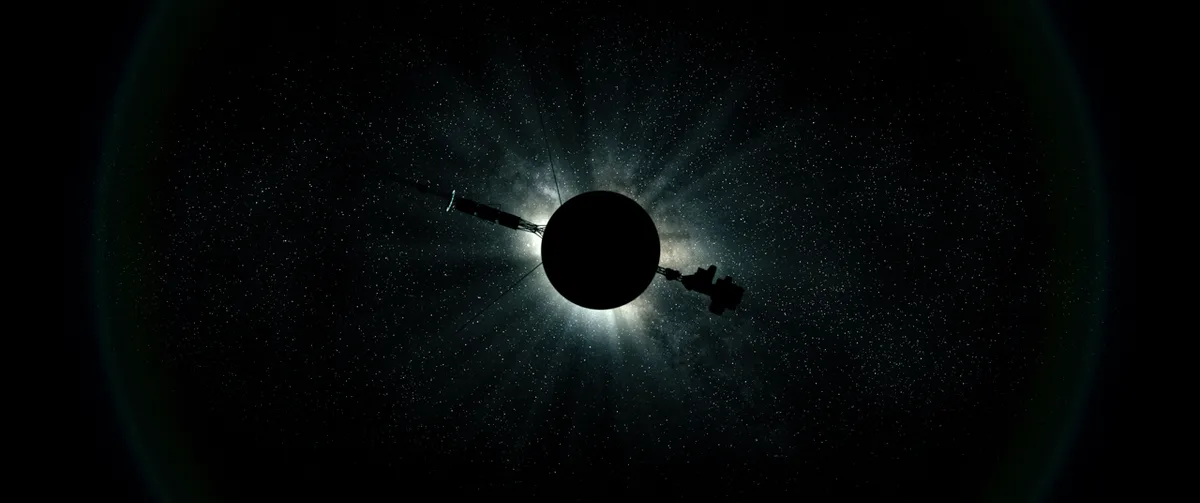The Voyager space probes are still out there, sailing through the interstellar space between ourSolar Systemand our nearest stars, and although they are billions of kilometres away, they are still very close to our hearts and minds, especially for those involved in the mission. In the new documentary filmThe Farthest, the engineers, scientists and artists who helped develop the two probes and Golden Records discuss the incredible effort involved in getting the mission off the ground, the nail-biting tension when things went wrong and the emotional impactVoyager’s40-year journey has had.
The Farthestis out in selected cinemas today and we’ve had a chance to see the film - it’s well worth catching if you are a fan of space exploration, but before then, here are a few of the mind-boggling facts and thoughts we had whilst watching:
Space is big… really, really big!
The Farthest (2017) documentary trailer (TheFarthest Film/YouTube)
- After all life on planet Earth is gone, the Voyager mission might be the only evidence that we ever existed – now that’s a deep thought…
- Voyager leaving the Solar System is the first time we became and interstellar race.
- There are (give or take) 200 billion stars in the Milky Way and 200 billion galaxies in known Universe – space is pretty big, and there’s a lot of possibility (and maybe a few intelligent species) out there.
- One lifetime ago we thought we lived in the only galaxy – oh how things have changed!
- In five billion years Andromeda and the Milky Way will collide, but there is so much empty space that virtually no planets/stars will hit each other.
- It’s “statistically impossible” not to have alien intelligence.
- The Challenger disaster happened on the final day of the Uranus mission, contrasting the pain and joy ofspace exploration. In the words of President Ronald Regan in the aftermath “the future doesn’t belong to the faint hearted, it belongs to the brave.”
- It takes 18 hours for a signal to travel from the edge of the Solar System, and seeing a “crazy spike” in the data one day August 2012 meant that Voyager 1 had passed through the magnetic solar sphere – the farthest man-made object had finally exited the Solar System.
- Voyager will outlive our Sun and the songs of our time will still be out there.
Arts and space crafts

- The Golden Record was developed from beginning to end in only six weeks – a short time to figure out a way to explain the world to aliens.
- The Beatles refused to have their songs on the Golden Record.
- The three computers on board the Voyager probes has a total memory 240,000 times less than a smartphone – in 1972 when Voyager was being developed, the most advanced computers had the same processing power as a car’s key fob.
- The Voyager probes are the size of a small school bus.
- The Golden Record had no “scientific” value but it captured the imagination of the media (much to the chagrin of NASA mission scientists) so a press conference was hastily arranged before launch. It was held in a motel room with a noisy Polish wedding next door.
- The Golden Record has audio greetings in 55 different languages (and the sound of a humpback whale) - like “proto tweets” to the Universe.
- Mathematics is a universal language so music that would reward this was also included on the record.
- NASA was accused of “sending smut to space” with the Pioneer plaque, so the only curated photograph not to make it onto the Golden Record was of a nude man and pregnant woman.
It’ll be alright on the night

- The probes were launched on repurposed Titan intercontinental ballistic missiles.
- The Voyager 2 gyroscopes “mutinied” due to intense forces of take off and began following unexpected commands. Despite this, the probe was actually working properly and successfully made it into space.
- Voyager 1’s launch was also problematic and lost propellant along the way. In the end it made it into space, but only 3.5 seconds before running out of fuel - otherwise it wouldn’t have had enough to get to Jupiter.
- To ground electromagnetic interference there is good old-fashioned tin foil on the Voyager (not advisable to try at home).
- When all the probes systems are turned off, the Golden Record becomes the mission’s primary objective
- The darkest day of the mission happened when the Voyager 2’s scan platform froze passing behind Uranus. The mission could have ended, but for wiggling it back and forth remotely to try to dislodge the frozen ice.
- At launch the probes had no capability to send images back from 30AU (about the distance to Neptune), but reprogrammed after launch and using Very Large Array in New Mexico.
A Voyager of discovery

- The Voyager probes used sound to detect the first lightning on Jupiter.
- Voyager discovered the Solar System’s largest ocean on the Jovian moon Europa.
- Io has 10 times the volcanic activity than Earth
- Energy and momentum have to be conserved, so when Voyager picked up 35,000 mph during its flyby, it slowed Jupiter by one foot per trillion years.
- Before Voyager all we could see of Uranus and Neptune were small blobs through a telescope.
- The Voyager mission had a limited timeframe due to the planets’ alignment being just right - last time the planets were aligned was 176 years ago and we were sailing in wooden ships.
- In all likelihood, we’ll all be dead and gone before anybody goes back to Uranus and Neptune.
- Uranus’ magnetic pole is near the equator, which means that when Voyager 2 passed it was pointing at the Sun. That shuts down the atmosphere, making it pretty boring to look at. Uranus is not a photogenic planet – poor Uranus L
- ThePale Blue Dotimage nearly never happened as there was “absolutely zero science” but Carl Sagan went to the head of NASA to get permission to turn Voyager around and take the shot.
These Voyager facts and figures are as captivating as they are incredible, but the real impact from the movie comes from the emotional stories told during the interviews with such visionaries as SETI founder Frank Drake, who developed the Golden Record with Carl Sagan, or to Sagan’s son Nick (whose voice appears on the Golden Record) about his father’s legacy. Seeing tears shed when the engineers who built the probes speak of seeing it launched, or the mission scientists when they think of switching Voyager’s instruments off shows the powerful effect the mission has had on tem, and the film really makes you feel like the Voyager probes are their family. For many it is a lifetime’s work andThe Farthestis a great watch to truly understand what this 40-year mission means, not only for the people who built it, but for humanity itself.
Follow Science Focus onTwitter,Facebook, Instagramand Flipboard